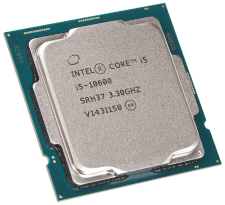CISC
Stands for "Complex Instruction Set Computing," and pronounced "sisk."
CISC is a type of processor design that includes a large set of computer instructions in its built-in instruction set. CISC instructions can vary in length, from simple tasks to multi-step operations, with longer tasks taking several clock cycles. CISC is one of two major design philosophies in instruction set design, along with Reduced Instruction Set Computing (RISC). The x86 processor architecture, which includes processors made by Intel and AMD, is the most widely-used type of CISC processor.
A single instruction in a CISC instruction set may perform multiple operations — for example, a single instruction may tell the processor to load values from two memory banks, multiply them, then store the result. Integrating complex instructions directly into the processor's instruction set requires a software compiler to create fewer lines of assembly code, which in turn require less memory to store instructions.
CISC vs RISC
CISC and RISC are two different ideas of instruction set design. Each has its own advantages and drawbacks when compared to the other.
CISC instruction sets contain more instructions that can handle more complicated tasks over several clock cycles, while RISC instruction sets include fewer instructions that each take a single clock cycle. When several RISC instructions are chained together to complete the same task as a single CISC instruction, the number of clock cycles required is often the same.
CISC processors also require more transistors to store the larger instruction sets than RISC processors. RISC processors can use those transistors for memory storage instead, or use fewer transistors for a less-complex chip design — which can be smaller, require less power, and produce less heat.
 Test Your Knowledge
Test Your Knowledge